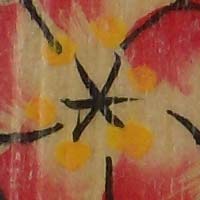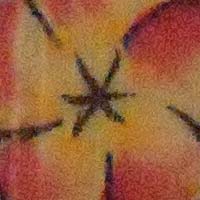Nikon Coolpix P60 Review
Review Date: June 30th 2008
Author: Gavin Stoker
Leave a comment about this Review
|
Image Quality
All of the sample images in this Review were taken using the 8 megapixel JPEG setting, which gives an average image size of around 3Mb.
Noise
There are 7 ISO settings available on the Nikon Coolpix P60. In terms of light sensitivity, up to ISO 400 there are no visible ‘issues', though from ISO 800 upwards detail is noticeably softer and by ISO 2000 images are starting to take on that watercolour appearance – though this is arguably preferable to the alternative of them showing so much visible grain that they start to resemble a sandstorm. Here are some 100% crops which show the noise levels for each ISO setting:
ISO 80 (100% Crop) |
ISO 100 (100% Crop) |
 |
 |
ISO 200 (100% Crop) |
ISO 400 (100% Crop) |
 |
 |
ISO 800 (100% Crop) |
ISO 1600 (100% Crop) |
 |
 |
ISO 2000 (100% Crop) |
|
 |
|
Sharpening
Here are two 100% crops which have been Saved as Web - Quality 50 in Photoshop. The right-hand image has had some sharpening applied in Photoshop. The out-of-the camera images are soft at the default sharpening setting, and benefit from some further sharpening in a program like Adobe Photoshop. You can also change the in-camera sharpening levels if you don't like the default results.
Original
(100% Crop) |
Sharpened (100% Crop) |
 |
 |
 |
 |
Chromatic Aberrations
The Nikon Coolpix P60 handled chromatic aberrations quite well, with some obvious purple fringing evident in areas of high contrast, as shown in the examples below.
Example
1 (100% Crop) |
Example
2 (100% Crop) |
 |
 |
Macro
The Nikon Coolpix P60 offers a Macro setting that allows you to focus on a subject that is 10cms away from the camera. The first image shows how close you can get to the subject in Macro mode (in this case a compact flash card). The second image is a 100% crop.
Macro Shot |
100% Crop |
 |
 |
Flash
The flash settings on the Nikon Coolpix P60 are Auto, Red-Eye reduction, Off, On, and Slow sync. These shots of a white coloured wall were taken at a distance of 1.5m.
Flash Off - Wide Angle (36mm) |
Auto Flash - Wide Angle (36mm) |
 |
 |
Flash Off - Telephoto (180mm) |
Auto Flash - Telephoto (180mm) |
 |
 |
And here are some portrait shots. The Auto setting caused a tiny amount of red-eye, which the Red-eye reduction mode almost completely removed.
Auto |
Auto (100% Crop) |
 |
 |
Red-eye reduction |
Red-eye reduction (100% Crop) |
 |
 |
Night Shot
The Nikon Coolpix P60's maximum shutter speed is 4 seconds in the Night scene mode, which is fairly disappointing if you're seriously interested in night photography. The shot below was taken using a shutter speed of 1/8 second, aperture of f/3.6 at ISO 800. I've included a 100% crop of the image to show what the quality is like.
Night Shot |
Night Shot (100% Crop) |
 |
 |
Overall Image Quality
Despite some obvious pixel fringing between areas of high contrast, and, like most of the Coolpix range, the odd soft image when there isn't plenty of light available despite the inclusion of Vibration Reduction, the Nikon Coolpix P60 delivers a commendable overall performance. When accurate focus is achieved, there is plenty of crisp detail on offer edge to edge, and colours fall on the warm side of naturalistic, which is especially flattering for both skin tones and landscapes – arguably the two subjects most commonly tackled by the camera's would-be mass market audience. In terms of light sensitivity, up to ISO 400 there are no visible ‘issues', though from ISO 800 upwards detail is noticeably softer and by ISO 2000 images are starting to take on that watercolour appearance – though this is arguably preferable to the alternative of them showing so much visible grain that they start to resemble a sandstorm. And of course, sharpening can be beneficially applied in your image editor of choice afterwards. Likewise, despite our earlier worry about the positioning of the flash, red eye hasn't proved a noticeable problem in our either of our test shots. So, a more or less clean bill of health for the Nikon Coolpix P60 when it comes to image quality, which is in truth all you can wish for given the outlay.
|
![]() PhotographyBLOG
is a member of the DIWA
organisation. Our test results for the Nikon Coolpix P60 have been submitted to DIWA
for comparison with test results for different samples of
the same camera model supplied by other DIWA
member sites.
PhotographyBLOG
is a member of the DIWA
organisation. Our test results for the Nikon Coolpix P60 have been submitted to DIWA
for comparison with test results for different samples of
the same camera model supplied by other DIWA
member sites.
